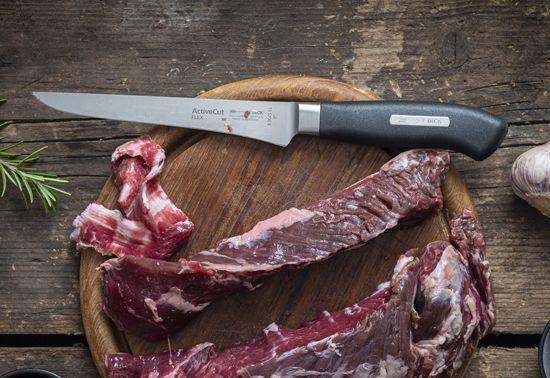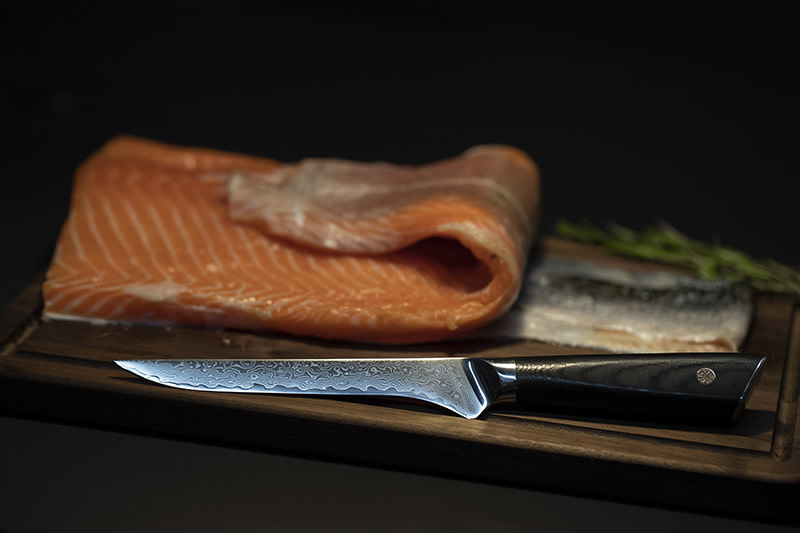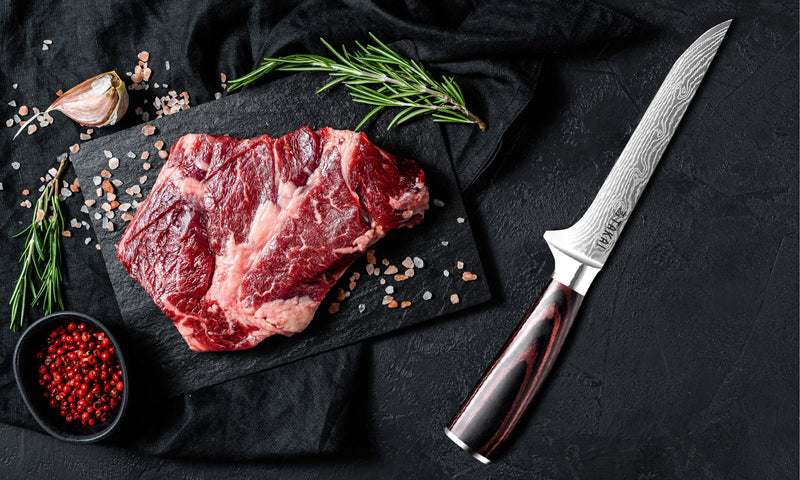In the culinary world, a boning knife for fish is not just a luxury but a necessity for chefs. This specialized tool is designed to make the intricate task of deboning fish efficient and precise. But what exactly makes a boning knife so indispensable in the kitchen? Let’s explore this essential tool and see why chefs around the globe swear by it.

Understanding the Boning Knife
A boning knife is a type of kitchen knife with a sharp point and narrow blade. It is used in food preparation for removing the bones of meat and fish. The key features that distinguish a boning knife from other knives are its flexibility and thinness, which allow for precise cuts and efficient deboning.
Key Features of a Boning Knife for Fish
- Flexibility: A flexible blade is crucial for maneuvering around the delicate bones of fish.
- Sharpness: A sharp edge ensures clean cuts without damaging the flesh.
- Durability: Made from high-quality materials, a boning knife withstands frequent use.
Why Chefs Prefer Boning Knives for Fish
Chefs prefer using a boning knife for fish for several reasons. The precision offered by a well-designed boning knife is unmatched, allowing chefs to maintain the integrity of the fish fillets. Additionally, the ability to quickly and efficiently remove bones without worrying about damaging the fish is a significant advantage in a busy kitchen.
Enhancing Culinary Skills
Using a boning knife effectively can enhance a chef’s culinary skills. It allows for more refined techniques and presentations, elevating the quality of dishes. For those looking to improve their knife skills, understanding the proper use of a boning knife is essential.
Choosing the Right Boning Knife for Fish
When selecting a boning knife for fish, there are several considerations to keep in mind. The blade’s material, size, and flexibility are crucial factors. A stainless steel blade offers durability and resistance to rust, making it a popular choice among chefs. Additionally, the knife’s handle should provide a comfortable grip to prevent fatigue during use.
Material and Design
The material of the blade impacts both performance and longevity. Stainless steel is a common choice, but some chefs prefer high-carbon steel for its superior sharpness. The design of the knife, whether straight or curved, also influences its suitability for different tasks. For more details on the differences, check out this comparison guide.
Proper Maintenance of a Boning Knife
Maintaining a boning knife is vital for preserving its performance and extending its lifespan. Regular honing and proper storage are essential practices. Learn more about honing techniques to keep your knife in top condition.
Cleaning and Storage
After each use, a boning knife should be thoroughly cleaned and dried to prevent rust and corrosion. Proper storage, such as using a knife block or magnetic strip, helps maintain the blade’s edge and prevents accidents.

FAQs about Boning Knives for Fish
What is the difference between a boning and a fillet knife?
A boning knife is typically used for removing bones, while a fillet knife is designed for cutting and preparing fillets. Both knives can be used interchangeably for fish, but their specific designs offer different advantages. For more insights, visit this detailed comparison.
How often should I sharpen my boning knife?
Regular honing keeps the blade sharp, but sharpening should be done every few months, depending on usage. A sharp knife is safer and more effective than a dull one.
Can a boning knife be used for other tasks?
Yes, a boning knife can be versatile in the kitchen. It’s not limited to fish and can be used for meat and poultry as well, making it a valuable addition to any chef’s toolkit.
This article contains affiliate links. We may earn a commission at no extra cost to you.


